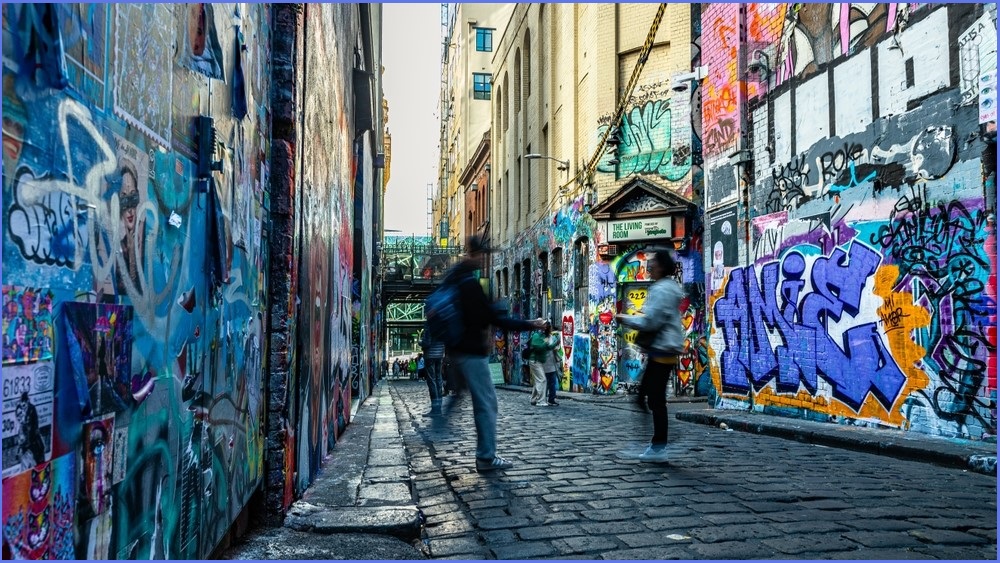The City of Melbourne is looking to upgrade its 280 cameras with facial recognition and AI that detects signs of crime, uncleanliness and vandalism.
Councillors voted last week to prepare a report by June “on options regarding the use of video analytics”, which Lord Mayor Nicholas Reece said could range from facial identification to “tracking offenders’ gait…or distinctive clothing items like a backpack.”
The council’s motion expanded the CCTV system’s remit from exclusively preventing crime to “enforcement issues” like stopping “acts of public nuisance” and “damage to public or private property”.
Reece listed potential computer vision use cases to the ‘Future Melbourne Committee’ that ranged from “tracking the licence plates of vehicles that dump rubbish” to “detecting abandoned shopping trolleys” and notifying supermarkets to remove them.
The technology could also identify “irregular movements like running in a busy shopping precinct”, which could alert the authorities of a potential perpetrator or victim of crime, he added.
Expanding biometrics
During an interview with Sky News, Reece defended biometric identification by noting that “more and more organisations are using this [facial recognition] technology…[including] pretty much any shopping centre in Australia.”
The city’s largest stadiums, like Melbourne Cricket Ground, AAMI and Melbourne Park, all scan entrants' facial data.
He also pointed to Logan City Council in South Brisbane, which uses computer vision to detect the “posting of illegal signs” and “abandoned vehicles”.
Privacy implications
Sky News’ Andrew Bolt noted that the Australian privacy commissioner ruled that Bunning’s use of facial recognition was illegal, but Reece rejected that the finding had any bearing on Melbourne City Council.
“The commissioner decided that in that particular case, the benefits of Bunnings using facial recognition software on everyone entering its store did not outweigh the privacy implications.”
However, the council’s own review would weigh up “the privacy concerns and human rights dimensions…against the benefits to solving crime” in its unique context, Reece said.
“In Melbourne, CCTV is very effective; our safe city camera network has been involved in 43,000 incidents, and it literally stops crime in its tracks; stopping crime while it's occurring.”
Monash University Media Studies Professor Mark Andrejevic told Information Age that “it's good to hear that the city is undertaking a careful public evaluation of the potential risks.”g
“Endowing CCTV systems with 'smart' capabilities such as face, object, and gait recognition represents a quantum leap in surveillance power that needs to be handled carefully.”
Andrejevic has written on “the increasingly widespread but unannounced use of the technology in a growing range of venues of all kinds, from hotels and clubs to sports arenas and retailers”.
He said that “the fact that the technology has already been put in place without public discussion is being used to claim that its use is normal and acceptable.”
Regulations and controls
Biometric identification is subject to state and federal privacy laws and the Victorian Government is currently working on an “AI Assurance Framework” for the public sector, which is likely to mandate guardrails and possibly audits of the use of emerging technology in high risk settings.
However, there are currently no laws or regulations “specifically governing the appropriate use of the technology” Andrejevic said.
“Its use is becoming increasingly widespread without clear guidelines or transparency and accountability measures.”
The City of Melbourne’s CCTV network’s controls include an access log and a 28-day retention period after which any footage is deleted unless a valid request has been made for it by the courts or other authorities.
The one councilor who voted against the motion, Olivia Ball, pointed out that other privacy protections were outlined in a manual that had not been made public.
The Memorandum of Understanding governing the circumstances in which the council shares access to its CCTV with Victoria Police has also been kept private, she noted.










